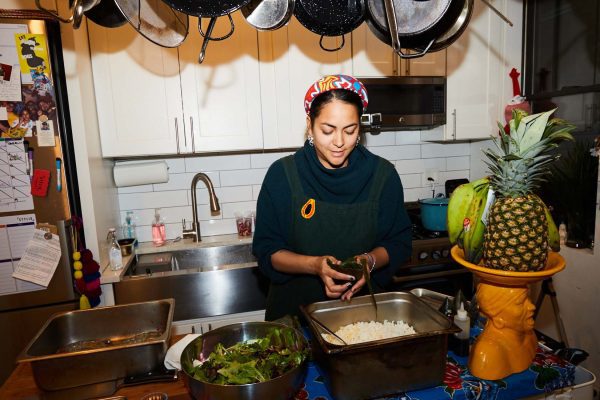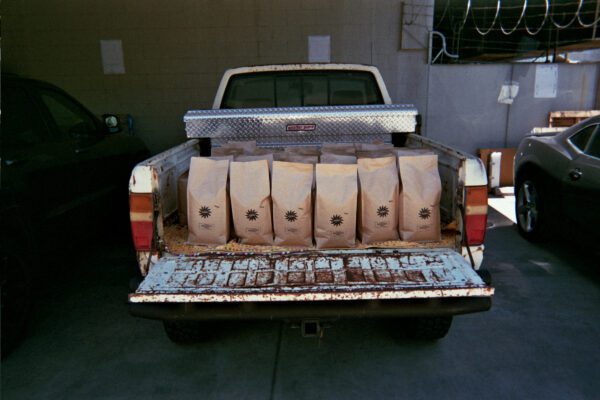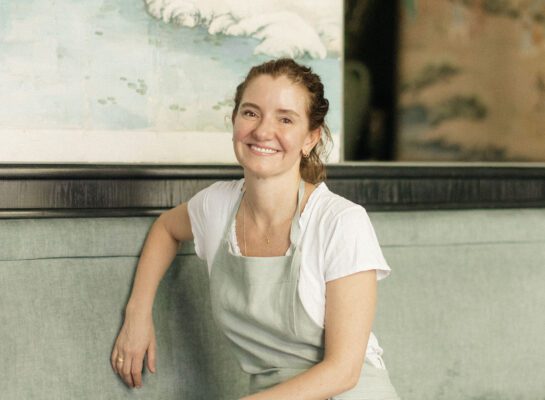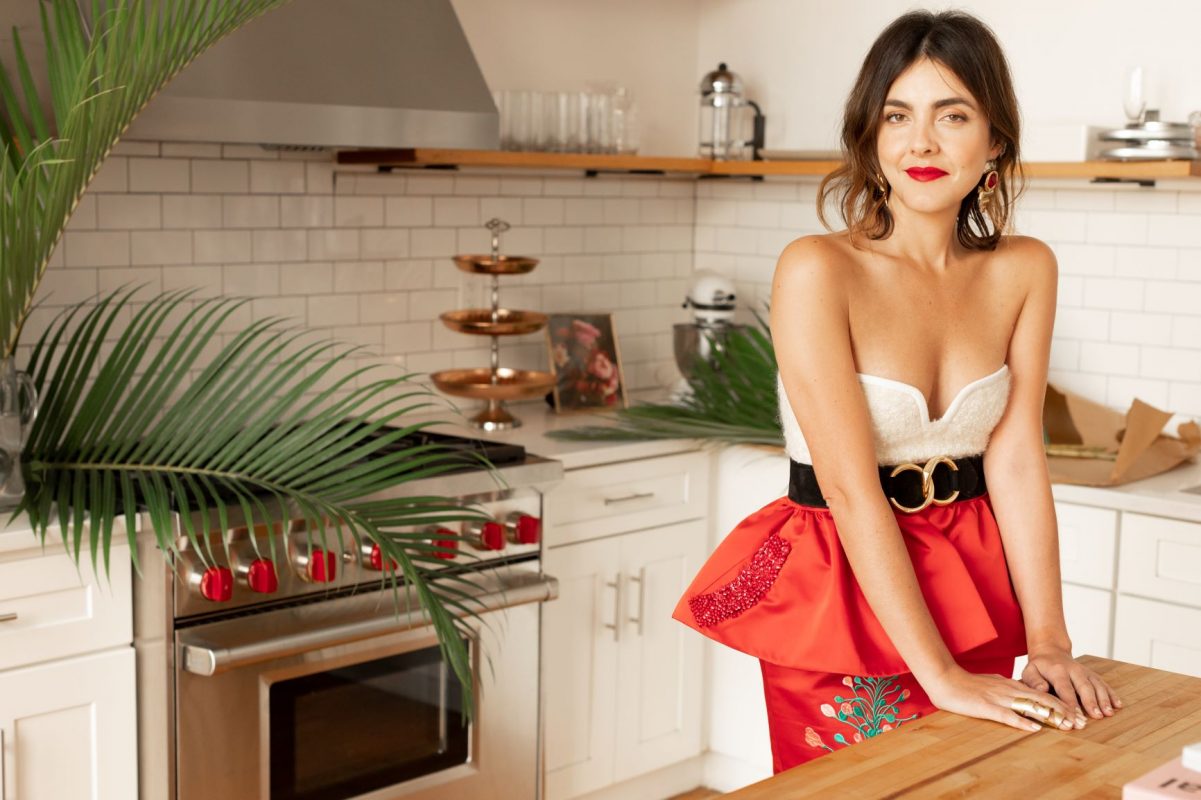
A COFFEE WITH
MARIANA VELASQUEZ: “AT THE TABLE IS WHERE THINGS CONSPIRE”
Name: Mariana Velasquez
Profession: Food Stylist
Birthplace: Bogotá, Colombia
Zodiac Sign: Pisces
Instagram: @marianavelasquezv
LATINNESS: For those who do not work in the industry, can you briefly explain what food styling means?
MARIANA: Food styling is basically someone who is in charge of the staging of a cuisine. It’s someone who makes you want to eat the page of a magazine, it’s visual provocation, like eating with your eyes. It’s translating the flavor, texture, smell and colors of food in a perceived reality and in an appealing imaginary setting. The challenge of a food stylist is to understand the collective provocation, what is it that we all find delicious? Inside a market, with a client that you’re working with, to find that appetite appeal that is so subjective, and try to communicate it.
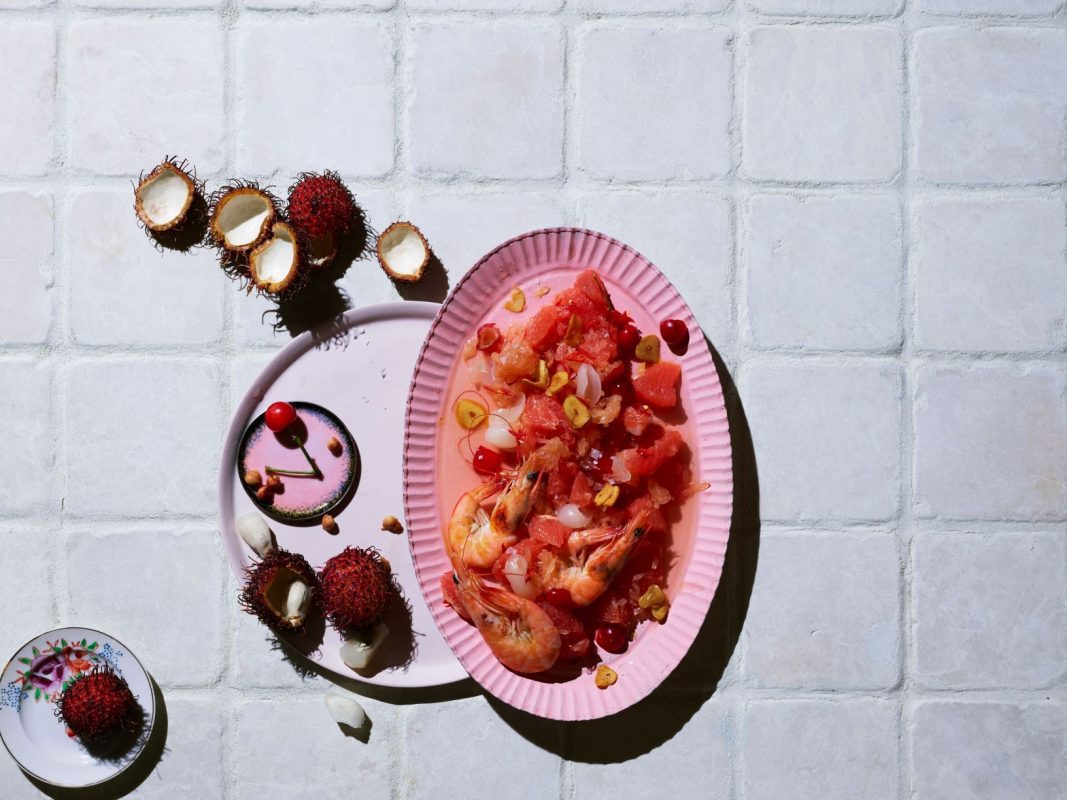
LATINNESS: Mariana, your profession as a food stylist can be considered very niche, and obviously requires a profound love of cooking. Can you talk to us about your precedents in the kitchen?
MARIANA I started cooking from home since my school days. In my family, the kitchen and the table have always been so important. First, with my mom and her table culture, and through my grandmothers, who were great chefs. My grandmother on my dad’s side is Lebanese, and my grandmother on my mom’s side is Colombian-German from Medellin, and both would bring all of us together through cooking, invitations, mealtime and gatherings. Those were the happiest moments for me, those moments of gathering and sharing.
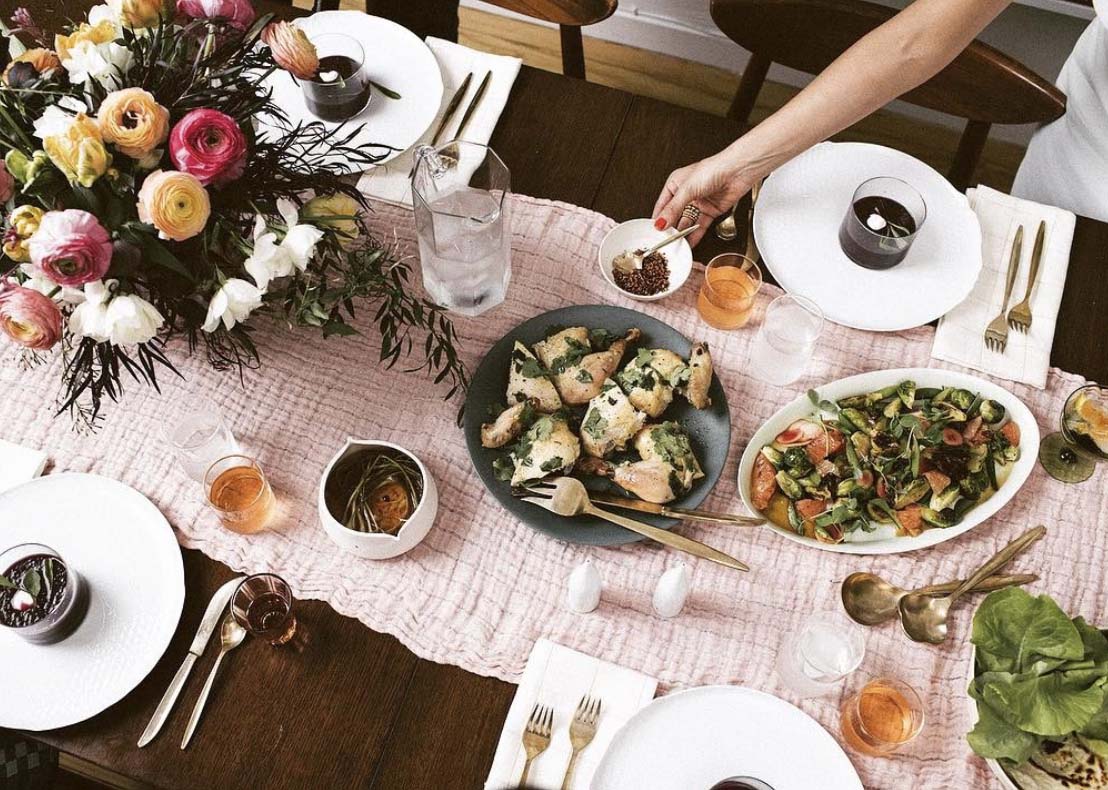
LATINNESS: It’s empowering that you took a traditionally female role of housewife, which particularly in Latin America is considered almost expected, and turned it into a profession and a business. How did that culture lead you to food styling?
MARIANA: The truth is that I had no idea one could have this profession, like, how do you take something that you love and make it your lifestyle? All this trajectory of studying culinary art, working in restaurants and in magazines allowed me to refine my taste for the kitchen and focus on the direction I wanted to take. Because first, it was the rigor of learning about cuisine- cooking all the bases and the whole technique, then acquiring velocity, culture, background, everything. Then, understanding that what most fascinated me was the ritual behind the cuisine, not so much the production, designing the menu for a restaurant, achieving the necessary scale…. No, for me it was more like, why is this plate served at this moment of the day, and why with this place setting, and why in this part of the world, and how this experience is what remains in our memory, you know? When one thinks of things that fascinate them or meals they yearn for, there is always a context. The experience cannot be separated- the place, the smells, what one was wearing, it’s everything. And food styling was the response to all of this: art, photography, capturing taste in an image or in a video, and creating a set that can be very over the top or very real, depending on the style, the message, the narrative. And well, that’s it. I’ve been a food stylist for 12 years now, and I find my job fascinating. My personal style has changed as my priorities of what is most important in the creative process continue to evolve.
LATINNESS: You mentioned you worked at magazines before becoming a food stylist…
MARIANA: Yes, I worked at Saveur and at Eating Well magazine for two very distinct reasons. The Eating Well office is in Vermont, and at that moment, I graduated from University and started as an intern doing trials and recipe development, a part that is fundamental. Magazines normally have a testing kitchen to develop and try recipes so that the reader can be sure that the recipe is accurate. If it says put the oven at 400 F° it’s 400 F°.
So first Eating Well and later, while living in New York, Saveur, which I think was one of the most formative experiences because at that moment it was a magazine about culture, travel, tradition and of telling the story behind the dish, the preparations, the wine. It’s fascinating, the culinary culture and the personal stories of the producers and the makers. I learned so much. I learned how to discover a city, to understand that each time I travel, the first thing I should do is go to a local market because it’s there you can feel the pulse of a city and its culture. From there, to understand how the experience of the trip is reflected or to understand a population.
So Saveur was the starting point to understanding that it wasn’t restaurants or having my own place, but working on images, that’s how it all started.
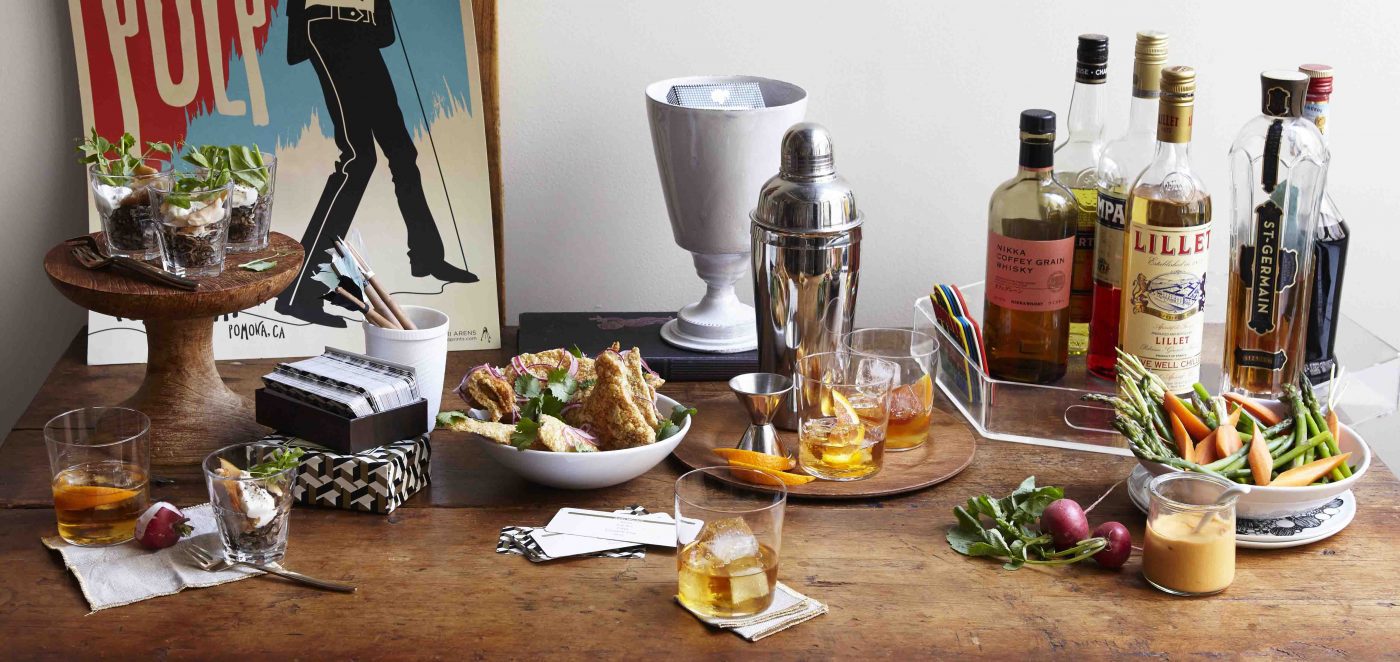
LATINNESS: So after this experience you started your own business?
MARIANA: I assisted two people for three years to learn the trade, you know? To learn about the logistics, the etiquette on set- which you know from fashion that there is a whole hierarchy- it’s a set etiquette. There is a certain way to do things, which I love. I love how it celebrates the work, how it professionalizes it, how each person has a role which is respected within the context. I assisted for three years, and well, I already had my portfolio and decided to go out on my own.
LATINNESS: With 12 years in the industry under your belt, what would you consider your big break- a moment that made you stop and say, ‘Wow, look what I’ve accomplished’?
MARIANA: Two years ago I was invited by the Murray Hotel in Hong Kong, a divine hotel in a building with Brutalist architecture from the seventies, which was a government building, but now is a hotel, and it’s incredible. They were inaugurating and wanted to create a narrative around afternoon tea, which in Hong Kong hotels is super important. They wanted to differentiate themselves from other luxury hotel experiences. They invited me to create this narrative of high tea and to work with the chief on a series of workshops, inventing the menu and transmitting its significance. I applied the building’s architecture which has these iconic square windows. And they own a spectacular art collection, so I reflected this art on the chocolates, on the cakes, on the sandwiches, on all that part, and it’s there I understood the reason why I do what I do. How to apply my passion for the visual part into reality.
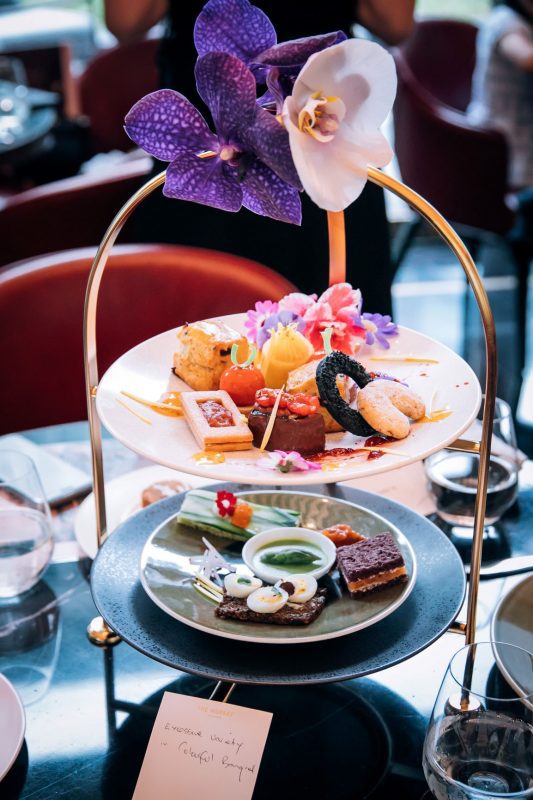
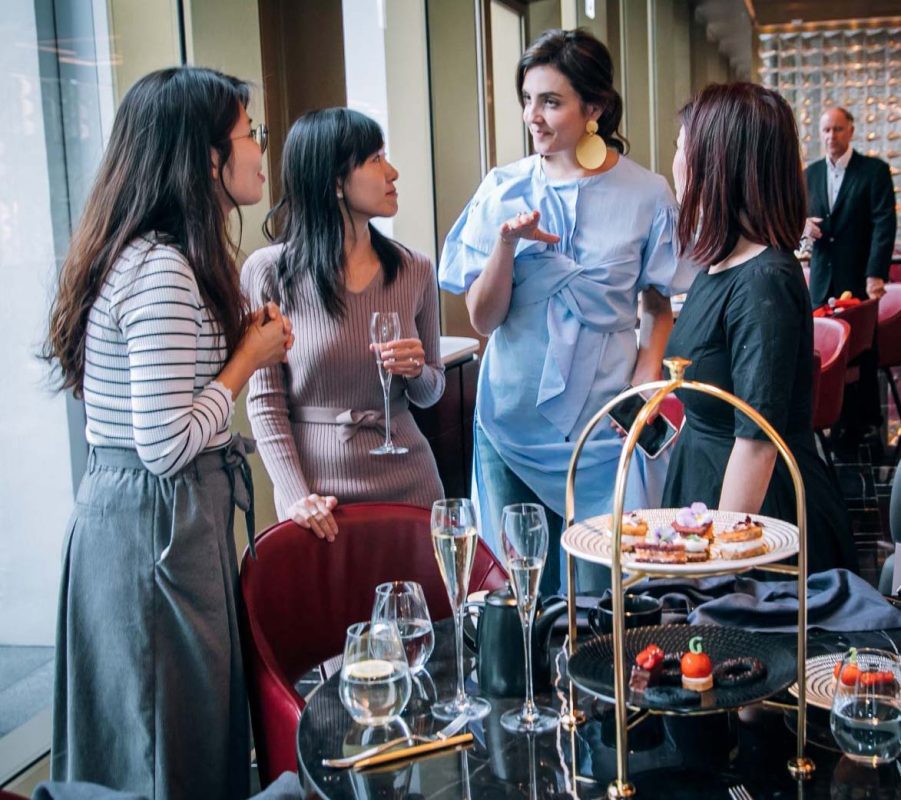
LATINNESS: We actually were intrigued by all the projects you do in Hong Kong. Surely they have local talent, but they sought you out, a Colombian living in New York.
MARIANA: There is something I’ve always loved about the culture there, and it’s that they have this principle of connectivity, which in Latin America and the United States, we don’t always have so much. Over there, it’s ingrained in their way of being and in their professionalism, everyone introduces you! So I received this job in Hong Kong, and from then on, so many clients over there, and it’s all thanks to this introduction by someone that this network was created. In the end, the sun shines for everyone, and the more projects there are, well, it raises the standard.
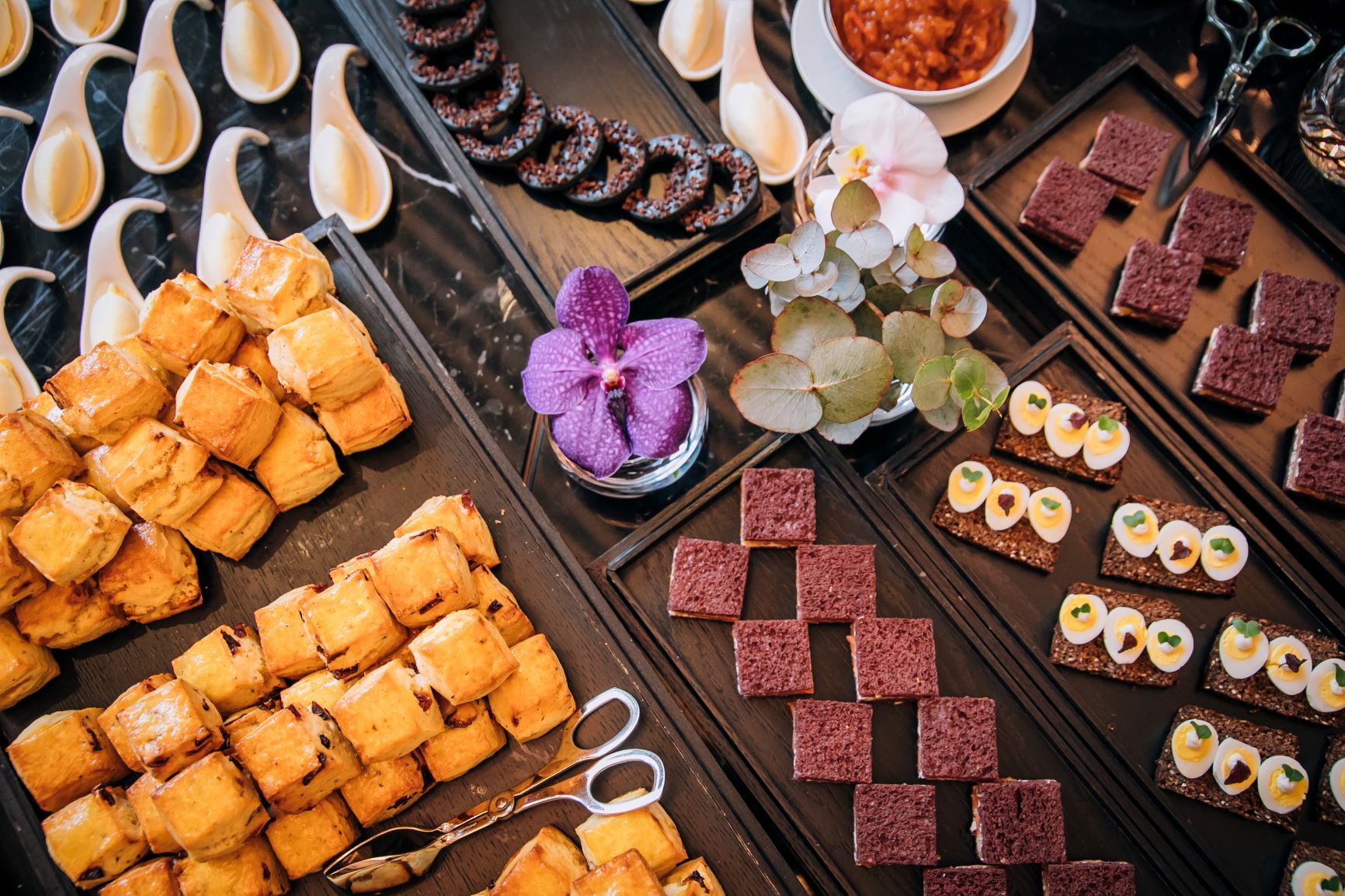
LATINNESS: How did the opportunity arise to work with Michelle Obama on her book American Grown: The Story of the White House Kitchen Garden and Gardens Across America?
MARIANA: That was really a beautiful project because I worked with a good friend of mine, an Australian photographer named Quentin Bacon. I had worked with him on several projects, and he was selected to do the photography by Random House, which was the editorial that published the book. Initially it was going to be a book about the White House garden and the First Lady’s discourse on a healthy diet for children, eating according to the seasons, the importance of knowing where ingredients are sourced, but then they realized they needed to include a section with recipes, that it would lose a bit of it’s essence if they didn’t discuss how to apply these concepts, right? So they needed a food stylist to do the cover and the recipes inside, and he called me. I was at Maison & Objet in Paris with my mom, and Quentin was calling and calling, and I was like, ‘I can’t answer this call’. It was 2010, you know, and there was no roaming. And so I finally said, ‘No, he’s calling me so much,’ so I answered, and he says, ‘I need you in D.C. on Tuesday because we have this secret project. I can’t say what it is, but they’re going to do a background check.’ So, I went immediately, and arrived at the White House with baskets, vegetables, flowers, all the props to create images in the garden, and then we did photos of the recipes in the studio. Now that I was watching Becoming on Netflix, it’s impressive that first-hand experience I had with Michelle Obama. I think what makes her completely alluring is her authenticity. How she is in the documentary, that’s how she is, she was just there standing in the garden, in the photo, like an entirely real person, like very self -aware as a consequence of her presence, but at the same time natural, very connected, looking at you in the eye, asking questions with curiosity, surrounded by the Secret Service, three assistants, and I remember thinking ‘Wow, either this is good politics or I want to be like her.’
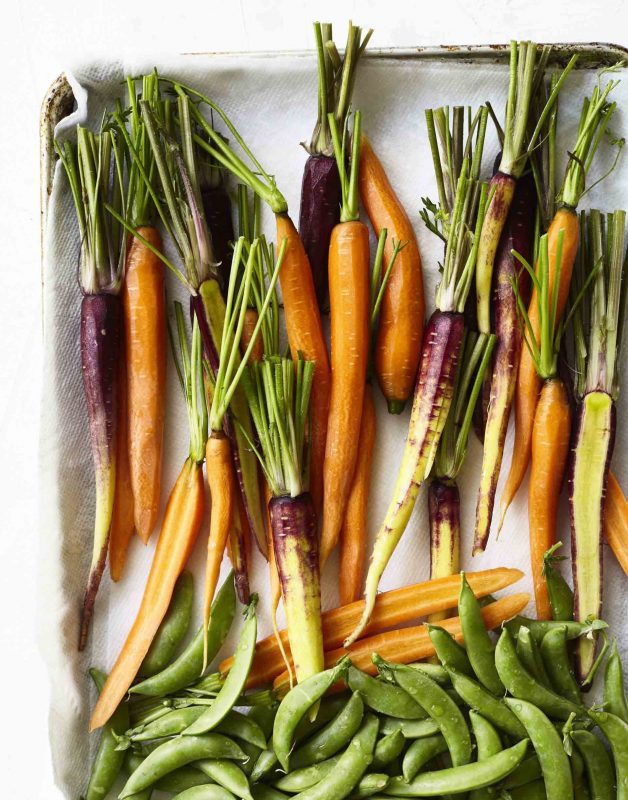
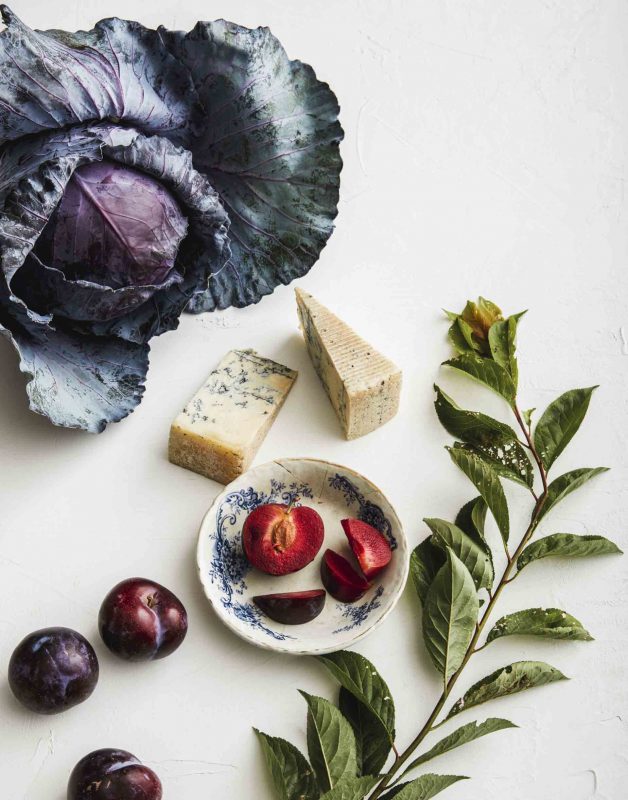
LATINNESS: Speaking of good politics, how does sustainability figure into the culinary world and food styling?
MARIANA: In everything. The base of a good kitchen are the ingredients and the origin of those ingredients is fundamental, so it has to be coherent. If the boss speaks of sustainability, then the fruits, the vegetables, the meats all need to be sourced locally, and the practices used to cultivate them need to be ethical. There are also fair labor laws, so that the people are paid well. All these things are so important and are on the table, but in real life are difficult to apply, just like in fashion. Sustainability sounds very pretty, but what does it really mean if the zippers cost an eighth of what they’re worth in Asia or Colombia? How do you make those decisions with ingredients in the kitchen? Plus, in the end, it’s what you’re feeding society with. That’s the other big responsibility, it’s what you’re putting inside your body. One thing that really impacted me was a job I did in Macau. It’s a city-state in China, which was once a Portuguese colony. It’s like the Las Vegas of China, and it’s a bit like Las Vegas where ultra luxury is what matters, so the milk is imported from Japan, the caviar is like these mountains of caviar, all in excess, but the carbon footprint is astonishing. It’s like, hold on, how is it better to drink milk that comes from I don’t know how many kilometers away that’s been bottled? It’s a huge contradiction where you can see that it’s zero sustainable. The food chains are disproportionate.
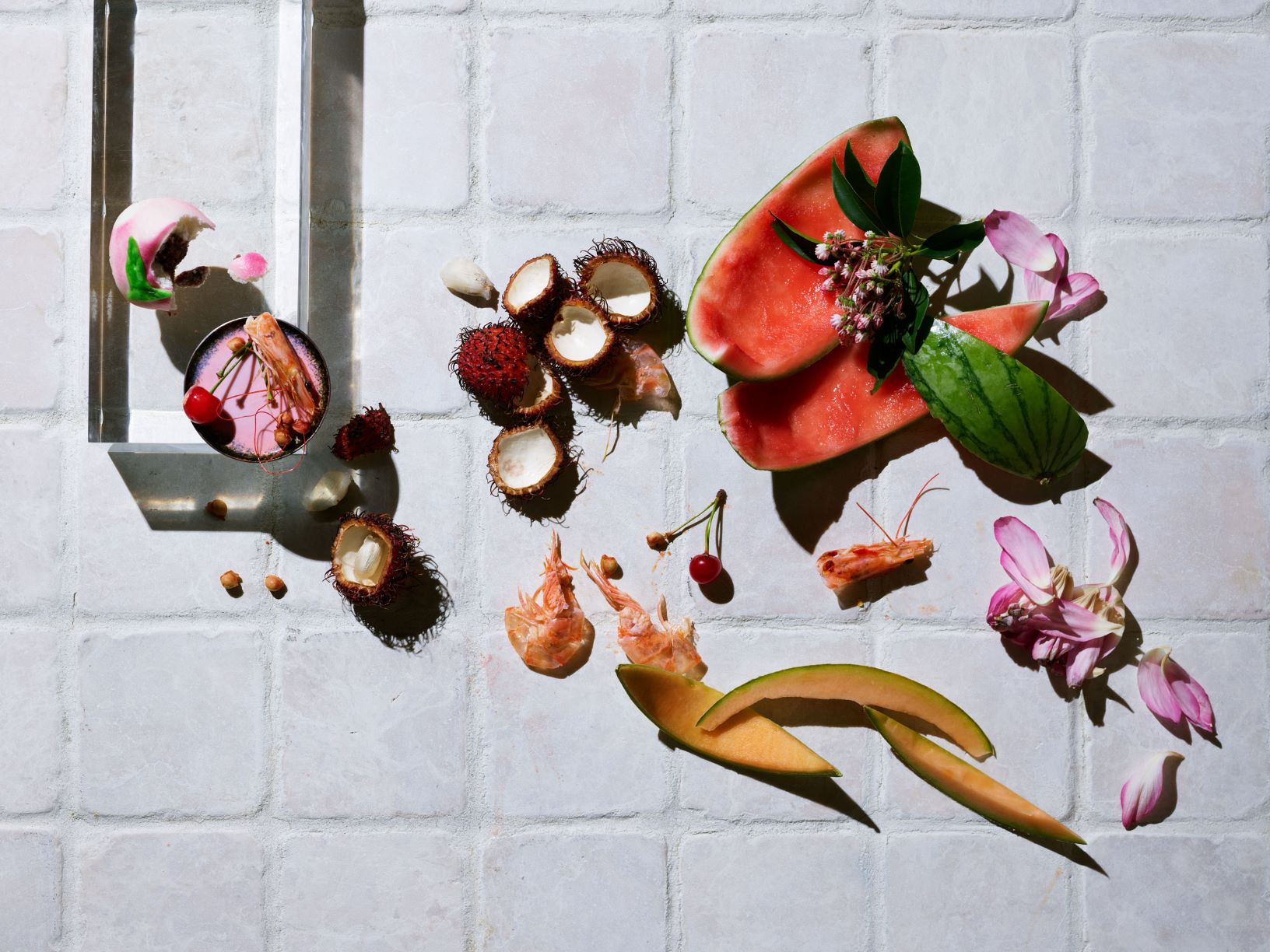
LATINNESS: In the art world there is an importance placed on the afterlife of exhibitions. It’s unacceptable today to create pieces or exhibitions that are just going to be destroyed afterwards and potentially damage the environment. How do you approach this issue in the culinary world?
MARIANA: At photoshoots, when I started my career, it was still a combination of film and digital photography. When it was with film, the food was on set for a long time because it was a long, drawn out process. So then, everything was fake, right? The ice cream was mashed potatoes and you’d put shellac because it needed to be on set for two, three hours, it was eternal. That food would go to waste, and it was thrown out, that simple. Plus, it was inedible. Now, with digital photography, the process is quicker. Also the idea of what is appealing has changed- it’s not the perfect image, but the super juicy thigh, the bread crumbs, the salt, and it feels more real. The food doesn’t go to waste because it’s on set for just a few minutes, and I’m like a Colombian mom, I pack it up and send everyone home with something. The topic of sustainability in an industry where so much is thrown out is an individual job and the responsibility of each person. On commercial shoots, sometimes there is a lot of waste because it’s larger quantities, because to find the perfect bun, the perfect bread, you have to open 50 packs.
LATINNESS: How crazy! It’s something being questioned in the fashion industry, as well, because how much carbon footprint is involved in the production of just one magazine issue? How can we reinvent ourselves or use our creativity to eliminate waste?
MARIANA: I think this time has served that purpose. We were so disproportionate that it’s about tightening the rope and considering new forms of creating and expressing. It’s fundamental.
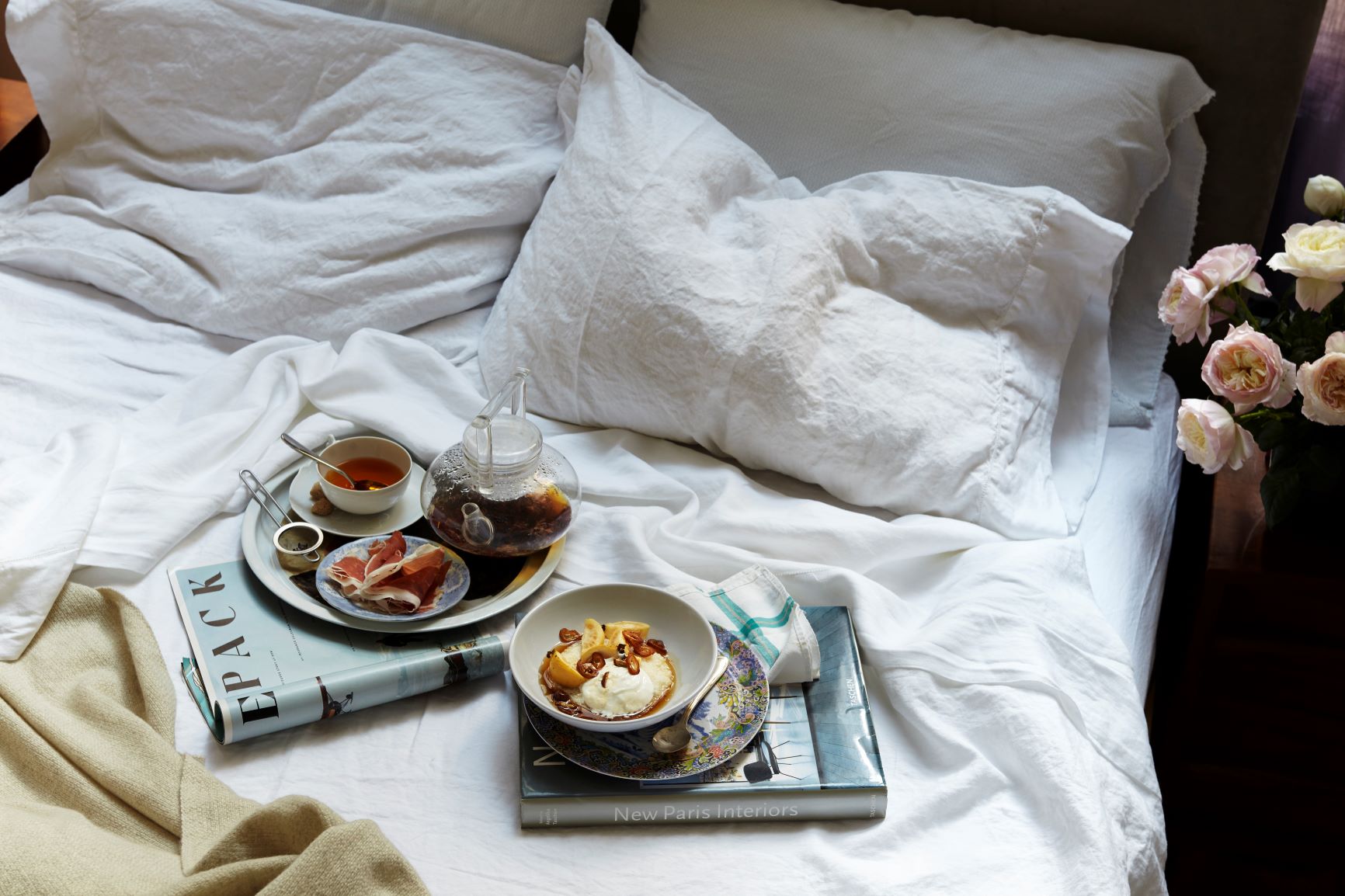
LATINNESS: Now that we are on the topic of creativity, we’ve seen your workshops on organizing the ideal soirée. Can you share essential hosting tips for dummies?
MARIANA: I think simplicity is most important. Don’t complicate yourself, don’t set the bar too high, start simple. Don’t wait until half an hour before guests arrive either to avoid panic. Plan a day in advance, I always like to set the table the day before. If everything goes wrong, at least the table is set! One has to be true to oneself. If what you really love is barbecue, then do a barbecue! That’s how you’ll feel most comfortable, and you’ll be able to do a good job and enjoy yourself. But if you love barbecue, but think you should do a super elegant table with a souffle for each person, well that’s the recipe for disaster. Keep it authentic, keep it true to who you are and what you want to transmit. I think that the gatherings in which one feels most comfortable is when the host is comfortable.
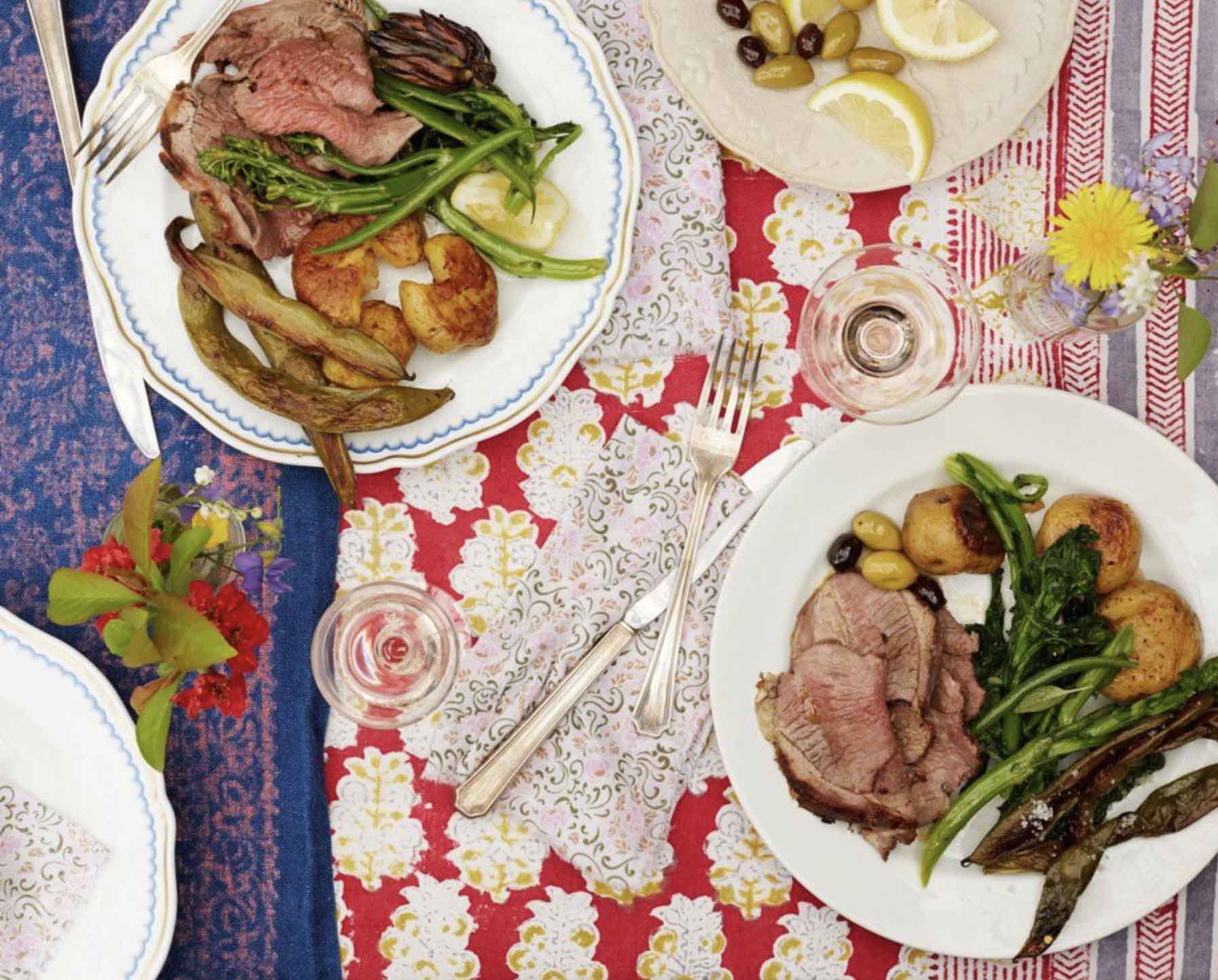
LATINNESS: What’s your opinion on seating arrangements? Do you apply them at home?
MARIANA: Depends on the table. If it’s a table for more than 10 people, yes. And I like it because we try to invite people who don’t know each other. We try to mix it up and think of who should sit next to who so that the night takes the direction you want it to, right? So before, I used to be more traditional, like: man, woman, man, woman. But I’ve discovered that it’s not about gender, but about interests and affinities and chemistry, and that’s one of things I most enjoy because at the table is where things conspire.
LATINNESS: Between us, do you have a recipe to seduce?
MARIANA: I have to say that my husband loves chicken, a oven-roasted chicken with herbs and potatoes, a good bottle of wine, that’s it, he doesn’t need anything else. It’s the essentials, right? After working all week, it’s like a ritual, plus a tray with veggies, and the chicken, cut it and serve ourselves. And what’s even better is that there are leftovers for the next day. Comfort real food, a bit French-like, we love it.
LATINNESS: And a recipe to win over or leave an impression, for example, with a client?
MARIANA: Well, I have a salad that’s like an ace up my sleeve because it always leaves an impression. It’s heavenly and delicious. It’s a salad with hearts of palm, grapefruit and lots of herbs. I put cilantro, basil, thai basil, lemon, olive oil and a bit of marine salt. It’s like hearts of palm ceviche, and it’s super refreshing and always a hit. Plus, citrus is always in season.
LATINNESS: Delicious. Is it your original recipe?
MARIANA: It’s something I invented from things I’ve learned, yes, yes, yes. I was searching for ingredients and natural pink elements for a workshop I did for Cena Rosa with a group of architects in Singapore. I made this ceviche because it had to be plant-based, and I couldn’t include meat nor fish because the group asked as such. I came up with this alternative, and the recipe became my signature.
LATINNESS: Amongst other inventions, there is your Cena Rosa (Pink Dinner). Can you tell us more about this?
MARIANA: Cena Rosa was a project that was born out of an inspiration by Luis Barragán, the Mexican architect, an exquisite man with a sensibility for light, aesthetics, beauty and harmony. I read a fascinating article in the New Yorker that talked about his story and legacy, and found this phrase which said that he requested his lunches be prepared entirely of pink tones, and I thought ‘How would they prepare a pink lunch in 1976 in Mexico City for a man like him?’ For dessert they would serve sliced melon topped with drops of sherry. I thought, well, in an entirely pink lunch, what would the ingredients be and what would the table setting be like at Luis Barragán’s house?
I did my first series of photographs imagining this and from there a series of creative workshops of color and cooking was born. And then came the dinners, workshop dinners where we’d sit at a table or like hosting big dinners with this theme and utilizing the local ingredients from the cities in which we celebrate these. The menus change constantly, and I don’t know, it’s like a constant that I love, to have that common thread, and a story that keeps developing over the years.
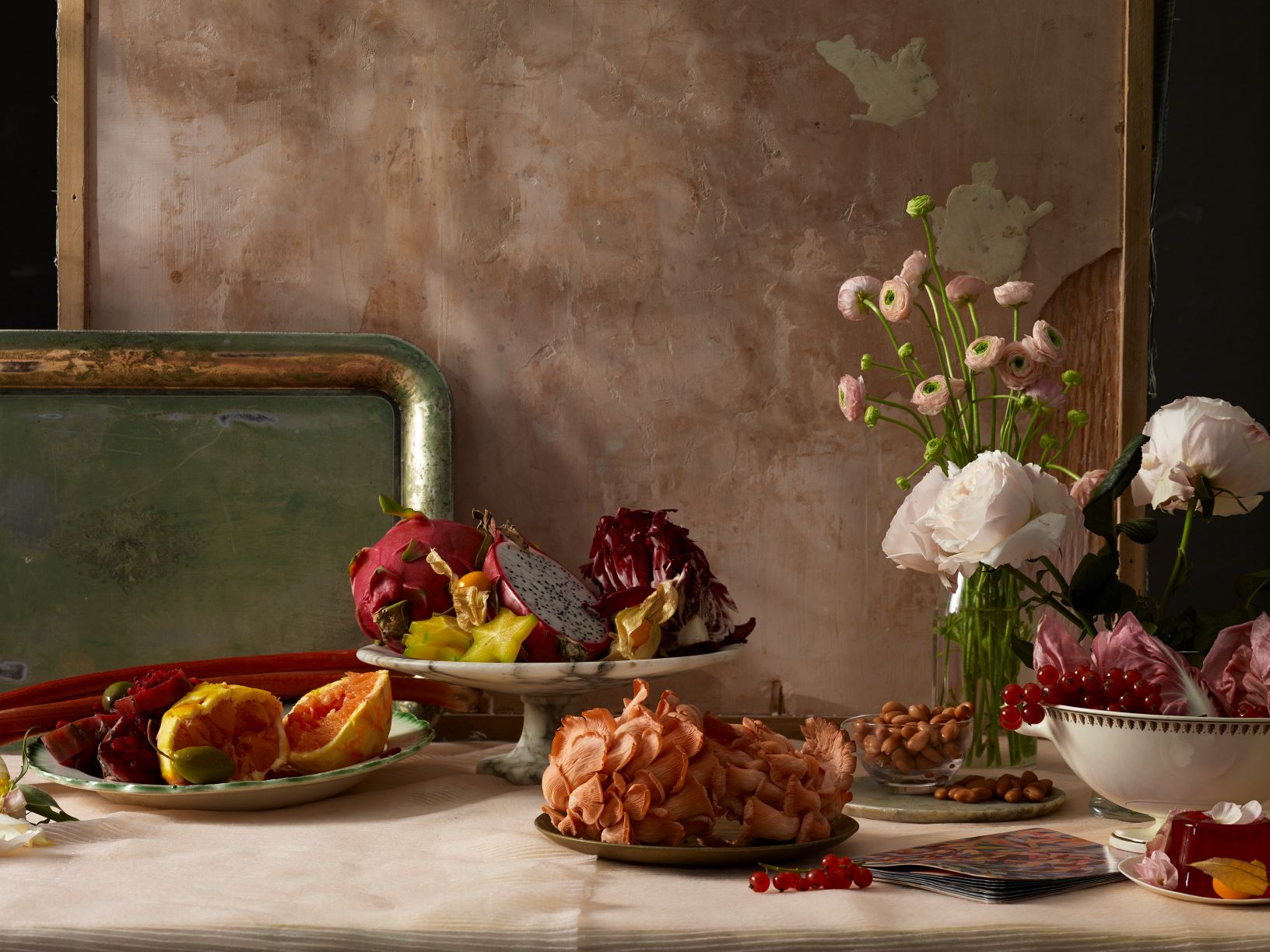
LATINNESS: You’ve also been acknowledged for your fashion sense. Do you think your experience in food styling has influenced the way you dress or vice versa? What came first, fashion or food?
MARIANA: Well, truthfully I’ve loved fashion since I was a child. I would wear hats when I was little. I loved clothes, dresses, always super femenine. I went to a school where we had to wear a uniform, and so, to have the option to get dressed was part of that. I feel that during the formative years in my career, of studying culinary art with chefs with white uniforms, well that part of me kind of came second because it wasn’t the context, right? And I really missed it, but at the same time I was in a medium where that wasn’t the focus. When I started working as a food stylist and as an assistant, and I think back on those beautiful sets, of those studios where the photographers and agency directors arrived looking super cool, I understood like, ok, we are cooking, but we’re in an environment where you should also express who you are through what you’re wearing. So that’s when I started to discover that part of myself again, and made my own aprons and started mixing a bit of utilitarian wear with what’s appropriate for what we were cooking, but also feel good about yourself, chic, and well a space that communicates that. I’ve loved it.
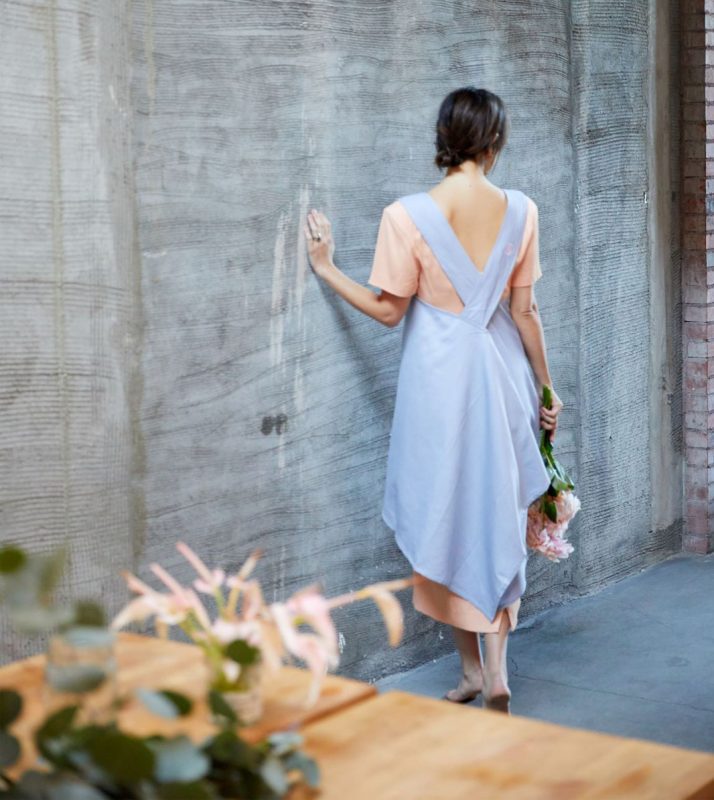
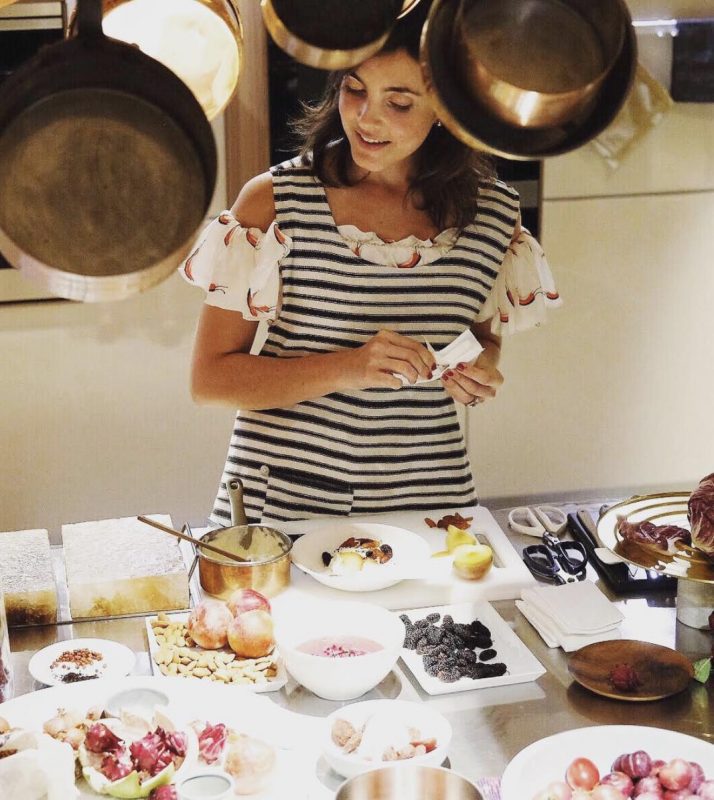
LATINNESS: Is that where the idea for Limonarium was born?
MARIANA: That’s where the idea for Limonarium was born, which has been evolving. Initially, I made the aprons for myself, for work. People would ask me ‘Is that a dress? What is it?’ Because I wanted something that was like a cape over my clothes, and that I didn’t have to adjust constantly. That I could match with what I’m wearing. When I married Diego, he told me ‘No Mari, everyone asks you about these. You have to sell these aprons, you have to.’ And he helped me structure the business, the production, everything. Limonarium was born like that. Last year I said I want to create a brand with everything that inspires me, stories of my trips, stories about where the collections come from, new things I’m trying, my recipes, and put them all in one place. Separate from my website as a food stylist, which is a website where as a client you can look for a service, this is more like the aprons, curated objects and creating a series of projects through here, a platform for enjoyment.
LATINNESS: Food stylist, entrepreneur, designer, author, you’ve done it all. Is there a creative project you have yet to accomplish?
MARIANA: Last year I was experiencing a creative block. You know, one goes through those periods in which you’re working nonstop, but like just going through the motions without much air to feel whether you’re truly fulfilled by what you’re doing, and so we went out one night with an author with whom I’ve done a couple of books, named Liz Moody. We’re sitting at dinner, and she tells me ‘Mariana, I don’t understand why every time I ask you why haven’t you written a book about Colombian cooking, you always make a face or look away.’ And I was like ‘What?’ I stayed quiet, thinking, and said, ‘You know why? Because I wasn’t ready.’ I’ve lived in the United States for 20 years, and I feel I needed to learn everything else to be able to return home, to be able to speak with authority about the cuisine where I come from, and with eyes of someone who left and who can look at the Colombian cuisine with appreciation, with nostalgia, and can find beauty in the ordinary, like the pedestrian. When one has a bit of distance, they appreciate those details and those nuances much more.
And my friend, being the intense person that she is, told me, ‘So, when are you going to write the proposal?’ And I was like, ‘Well now.’ She gave me a deadline, and I sat down to write and structure the book, and write, write, write for like four days, and I told Diego, ‘I have this proposal, let’s review.’ We created the images, and last year, at the end of the year, a publishing house bought the book. It’s called Colombiana, and it’s a Colombian recipe book inspired by the various moments of the day. There is a whole section titled ‘La Mesa” with menus inspired in different locations that have marked my experience of Colombia, and there is a section on styling, tableware, playlists, the whole context.
LATINNESS: You mentioned you were experiencing a creative block last year. Where do you turn to when searching for inspiration?
MARIANA: I love old cook books. I often find them at antique stores and flea markets, books that before, were solely illustrations, like to also understand that point of view without visual of the cuisine, to take some distance from that part. I go to galleries. That part of contemporary art in spaces where everything is possible. In the kitchen, there is always a type of structure and firm rules, while in art, there is total liberty, so it’s a place where I find a lot of inspiration.
And cinema! Honestly, especially now that we’ve had time to watch the entire Criterion collection, and watch Fellini films and see that cinema where one can transmit a story through an image, is fundamente to what I do, so I love it.
LATINNESS: What’s one piece of advice you’ve received that has resonated in your career?
MARIANA: Persevere, things don’t happen overnight. There are a lot of moments when the future won’t seem very clear, but persevere. If one wants it, then the work must be done. That rigurosity, holding on to the dream, although, at times that dream won’t seem so clear nor possible, you have to endure. It’s advice that has always helped me.

